#SHA2016 Ethics Bowl: Let’s Get Ethical!
 Good morning SHA members! For this week’s #SHA2016 conference post, Jade Luiz, graduate student at Boston University, discusses the upcoming #SHA2016 Ethics Bowl. Please read below to learn more!
Good morning SHA members! For this week’s #SHA2016 conference post, Jade Luiz, graduate student at Boston University, discusses the upcoming #SHA2016 Ethics Bowl. Please read below to learn more!
As registration for the #SHA2016 Annual Meeting takes off, we hope that students consider all of the different events available to them, including the Ethics Bowl! The APTC student subcommittee, aided by the Ethics Committee, is gearing up for the third annual SHA Ethics Bowl at #SHA2016 in Washington, DC! Terrestrial and underwater archaeology students are invited to participate in this challenging and fun ethics event. Students will take on case studies relevant to ethical issues that they may encounter in their careers. Because issues in archaeological ethics are rarely static, “game-changer” cards will also be introduced during play to encourage participants to think on their feet and make changes to their plans mid-stream.
Students are welcome to form their own teams of up to four members of mixed graduate and undergraduate participants. Competitors will be given this year’s cases in advance so they can prepare their position. The issues posed range from underwater to terrestrial contexts and have been provided by members of the SHA Ethics committee. These issues are based on current challenges students may face in their careers (if they have not already). In addition, we want The Ethics Bowl to mirror real life as closely as we can—one always has to expect the unexpected. For this reason, a game-changing card will be introduced during play for each team. The cards contain new information about the case and provide complications players will need to negotiate. Quick thinking will be a plus! The spontaneous nature of these curve balls will make for some additional fun!
Planning is already underway to make the #SHA2016 Ethics Bowl the biggest and best yet! While the past grand prize has been registration for the following year’s annual meeting, this year the Register for Professional Archaeologists (RPA) is providing a grand prize of $500 to be shared among the members of the winning team with a second place prize of registration to the 2017 annual meeting in Fort Worth, TX! In addition, the ethics scenarios will be provided by the SHA Ethics Committee and the RPA, with volunteer judges from both organizations.
Teams will be scored on clarity, depth, focus, and judgment, in their responses. The bowl is intended to foster both good-natured competition and camaraderie between students from many different backgrounds and universities. Registration is now OPEN for the #SHA2016 Ethics Bowl, until October 20th, 2015!
The 2015 Ethics Bowl in Seattle, WA, was a success despite its small size. Competitors included both graduate and undergraduate students from East Carolina University, Wesleyan University, and University of Idaho. As our judges, we were honored to have Paul Johnston, Darby Stapp, and Sara Gonzalez, who asked probing questions of the participating teams. The 2015 case study posed the following issue to our competitors:
“For several years you have been working for a local museum in a region known for its underwater, colonial era shipwrecks. One day, a patron schedules an appointment with you to discuss a wreck that he has discovered while diving. The patron seems genuinely interested in the history of the area, and you feel like the meeting may end in an excellent research opportunity, but the patron removes a box from his bag which, as it turns out, is packed quite full of Spanish coins and other small, valuable objects. He explains that he took only the items he could easily carry from the wreck as he had not been expecting to find anything so intact, but that there were many well-preserved boxes of cargo and ship fixtures visible and apparently recently exposed. It becomes clear that the purpose of meeting with you is that he wants you, as an archaeologist, to value the items so that he might better estimate the economic wisdom of carrying out a large-scale salvage of the site. When you explain that you do not feel comfortable assigning value to artifacts, the patron becomes offended and suggests that he might get the information elsewhere. He is unwilling to share the location of the site if you do not agree to value the artifacts.”
In addition to the above problem, our teams also had to contend with the following game-changers:
“The patron informs you that he has already secured the full support and funding of a large salvage company for removing artifacts.”
And
“The patron refuses to guarantee that he will let you know where the site is if you assist him.”
Despite there being no ideal option for our participants in this scenario, they did really well making the best of an awful situation through in-depth exploration of the issues. In the end, the East Carolina State team took the day and each team member won free registration to the #SHA2016 Annual Meeting in Washington, DC!
For more information for #SHA2016 Ethics Bowl, check out the online conference agenda , the SHA Meeting website, or please email SHAethicsbowl@gmail.com.
Additionally, if you are interested in volunteering with this event, either in preparation for the annual meeting or the day of competition (or both!), please email Jade Luiz at jwluiz@bu.edu.
Keep an eye out for more information regarding upcoming student events and the #SHA2016 Ethics Bowl. We look forward to seeing you in Washington, DC!
DRIVE Act: Clearing Things Up
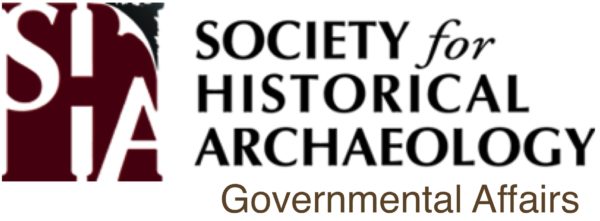 A lot of news (and panic) is rapidly circulating among the preservation and archaeological communities as the Developing a Reliable and Innovative Vision for the Economy Act – the DRIVE Act (S. 1647, sponsored by Sen. Inhofe (R-OK)) – makes its way through Congress. It passed the Senate on July 30 as an amendment to H.R. 22.
A lot of news (and panic) is rapidly circulating among the preservation and archaeological communities as the Developing a Reliable and Innovative Vision for the Economy Act – the DRIVE Act (S. 1647, sponsored by Sen. Inhofe (R-OK)) – makes its way through Congress. It passed the Senate on July 30 as an amendment to H.R. 22.
Drawing everyone’s ire is Section 11116 of H.R. 22 (formerly Section 1116 of the Senate’s DRIVE Act), which in part orders the Secretary of Transportation to “align, to the maximum extent practicable, with the requirements of the National Environmental Policy Act of 1969 (42 U.S.C. 4231 et seq.) and section 306108 of title 54 [Section 106 of the National Historic Preservation Act].” Commentaries on Section 11116 express deep concern that it will eliminate review under Department of Transportation Act Section 4(f), which mandates that the administering department at the federal DOT may not approve the use of a Section 4(f) property unless a determination is made that there is no prudent and feasible alternative to the use of the property and the action includes all possible planning to minimize harm, or that the use will have a de minimis (i.e., trifling or minimal) impact on the property.
National Trust President & CEO Stephanie Meeks published a widely circulated op-ed in The Hill’s Congress Blog on July 29, arguing that “Section 11116 … essentially guts the requirement that transportation projects take the least harmful alternative around a historic landmark, if avoiding it altogether isn’t ‘feasible and prudent.’”
Clarifying Section 11116
Section 11116 would not completely eliminate 4(f) reviews. Rather, it states that if the DOT determines there is no feasible and prudent alternative to avoid use of an historic site (that is, properties listed in or eligible for listing in the National Register of Historic Places), the Secretary shall inform applicable SHPOs and THPOs, the ACHP, and the Department of Interior of the determination and ask for their concurrence. If they all concur, then the DOT can satisfy the requirements of Section 4(f) through treatment of the historic site as stipulated in a Section 106 memorandum of agreement or programmatic agreement.
Currently, if the DOT uses a historic site or other protected property and the impact is not de minimis, the DOT prepares an individual Section 4(f) evaluation, which can be a time consuming process. (The Federal Highway Administration has five programmatic evaluations that it can apply to a project, if appropriate, which are basically streamlined individual evaluations.) The 4(f) evaluation requires the DOT to demonstrate that there are no feasible and prudent alternatives that avoid the use of the Section 4(f) property, and if there are no such alternatives, the DOT identifies measures to minimize harm to the property.
Under the proposed changes in Section 11116, if the parties agree that there is no feasible and prudent alternative that avoids impacts to an historic site, then the impacts on the site are not taken into account in the individual Section 4(f) evaluation process. Also, the proposed changes will have little impact upon archaeological resources, since 4(f) protection only rarely applies to archaeological sites. As the Federal Highway Administration’s and Federal Transit Administration’s Section 4(f) regulations explain, a National Register listed or eligible archaeological site is not protected under Section 4(f) if the site is important chiefly because of what can be learned by data recovery and has minimal value for preservation in place.
Finally, with the House in recess until after Labor Day, the Act has a minimal chance of progressing, particularly because lawmakers are unlikely to agree on how to pay for a long-term transportation bill. That being said, there is concern among state DOTs that involving Interior in this new review process might actually delay projects rather than streamline them, since Interior already takes months to approve Section 4(f) reviews. Accordingly, involving Interior in the concurrence process might further slow down project delivery, and grow the incentive to reduce protections for historic sites. Also, the Act would place the burden of consulting with the DOT to determine what is feasible and prudent on SHPOs, THPOs, and the ACHP, a task outside their NHPA-mandated responsibilities.
It appears that while there are ample grounds to oppose Section 11116, and to watch this and other transportation proposals closely for impacts on historic and archaeological resources, we should resist the urge to panic.
Meet a Member: Michelle Pigott
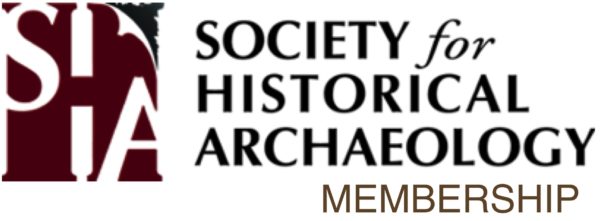 Here’s the latest in our series of entertaining interviews with a diverse array of your fellow SHA members. Meet a member for the first time or learn something about a colleague that you never knew before. This blog series also offers current members an opportunity to share their thoughts on why SHA membership is important (Camaraderie? Professional service? Exchange of ideas in conference rooms and beyond? You tell us!). If you would like to be an interviewee, please email the Membership Committee Social Media Liaisons Eleanor Breen(ebreen@mountvernon.org) or Kim Pyszka (kpyszka@aum.edu).
Here’s the latest in our series of entertaining interviews with a diverse array of your fellow SHA members. Meet a member for the first time or learn something about a colleague that you never knew before. This blog series also offers current members an opportunity to share their thoughts on why SHA membership is important (Camaraderie? Professional service? Exchange of ideas in conference rooms and beyond? You tell us!). If you would like to be an interviewee, please email the Membership Committee Social Media Liaisons Eleanor Breen(ebreen@mountvernon.org) or Kim Pyszka (kpyszka@aum.edu).
Michelle Pigott is a graduate student at the University of West Florida. Her master’s thesis discusses culture change in two Apalachee Indian communities during the 18th century using detailed ceramic analyses.
What’s the most interesting artifact you’ve ever found? This summer the field school I was running as a graduate student field director discovered a partially complete miniature Apalachee brushed ceramic jar, nestled in the backfill of a historic post hole. This fall UWF’s Virtebra Lab run by Dr. Kristina Killgrove and fellow grad student Mariana Zechini, was able to 3D scan and print it: http://virtebra.wordpress.com/2014/10/27/42/
What is the first site you worked on? What is the last one (or current one)? The first site I worked on was a month-long field school through California State University, Dominguez Hills, at a late historic Chumash Indian village in the Los Padres National Forest in 2009. The most recent site I’ve worked on (field work ended in August, lab work is ongoing) is a mid-18th century Apalachee Indian Mission, San Joseph de Escambe, located north of Pensacola. It has been the main source of my material for my master’s thesis research and also has a great blog run by our PI, Dr. John Worth: http://pensacolacolonialfrontiers.blogspot.com/
What are you currently reading? Well my “for fun” book right now is Cibola Burn by James A. Corey, the fourth of a series of excellent hard sci-fi novels. Archaeologically speaking, I am reading The Native American World Beyond Apalachee: West Florida and the Chattahoochee Valley (John H. Hann, 2006) and French Colonial Archaeology in the Southeast and Caribbean (Kenneth G. Kelly and Meredith D. Hardy, editors, 2011), both of which are providing excellent background information for my master’s thesis research.
What did you want to be when you grew up? In my elementary school years I was fairly certain I would grow up to be a paleontologist, however, discovering a cache of old Egyptology coffee table books at eight years old left me obsessed with archaeology (I had pyramids painted on my bedrooms walls well into high school), and while my interests have shifted continents and time periods, I’ve never looked back!
Why are you a member of SHA? As a graduate student, being in SHA opens up so many opportunities to be in tune with current international research, as well as great networking. Plus it’s an awesome excuse to go and visit new cities for the annual meetings!
At what point in your career did you first join SHA? When I was in my second year of graduate school.
How many years have you been a member (approximately)? Two years (and planning on many more!)
Which article from Historical Archaeology has been the most influential to you? Well right now, as part of my thesis work, I’ve been reading up a lot on the theory of “creolization” and how it’s best used to discuss culture change in North American Native Indian communities. I’ve found three articles, “From Colonist to Creole: Archaeological Patterns of Spanish Colonization in the New World” by Charles Ewan (2000, 34(3):36-45), “The Intersections of Colonial Policy and Colonial Practice: Creolization on the Eighteenth-Century Louisiana/Texas Frontier” by Diana DiPaolo Loren (2000, 34(3):85-98), and “Creolization in Southwest Florida: Cuban Fishermen and “Spanish Indians,” ca. 1766-1841” by John Worth (2012, 46(1):142-160), to be especially helpful on this diverse topic.
Which benefit of belonging to SHA do you find the most beneficial? It’s definitely a tie between access to all the journal articles (online!) and being able to attend the annual meetings. A conference full of presentations just on historical archaeology? Yes please!
#SHA2016: D.C. participates in #dayofarch!
Good afternoon SHA members! We hope this post finds you taking a much needed break from the field or lab!
As you may know from our previous post, July 24th was the international Day of Archaeology (#dayofarch), virtually hosted by the Day of Archaeology Project! To reiterate, the Day of Archaeology Project encourages the archaeological community to celebrate and promote archaeology on a global scale, via social media.
For the past few years, D.C. has participated in #dayofarch, hosted by Archaeology in the Community (AITC). This year, the D.C. Day of Archaeology festival was held at the historic Dumbarton House, in Georgetown, and had a wonderful turnout of D.C., Maryland, and Virginia organizations, firms, and school departments. #dayofarch participants and volunteers set up displays, games, exercises as well as coordinated visits to the local Yarrow Mamout Archaeological Project, in order to celebrate and promote archaeology in the D.C. area. Please check out AITC’sFacebook for photos of the event!
If you are curious about other participants in #dayofarch, run a search on #dayofarch via Facebook, Twitter, and/or Instagram. Anyone who posted to the hashtag “#dayofarch” will pop up in a search on one of these social media outlets. Or, visit the Day of Archaeology Project website for all of the #dayofarch blog posts- from around the world-here!
And, if you are curious about past #dayofarch contributions, check out this awesome map, depicting the growth of the Project since 2011! Hover over your region/country/city of choice and see what contributions were posted!
Hope you join #dayofarch, next year!
Diggers Done Right
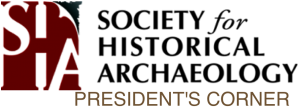 They’re back!
They’re back!
Yes, the King and Ringy, that duo you love to hate will be kicking off the third season of Diggers, July 20th on The National Geographic Channel. What? They’re still in business!? All the other such shows – Savage Family Diggers,Dig Fellas, and Dig Wars, have all gone by the wayside. Curiously, Diggers has actually been a hit for the NGC. Even with that ratings success, things will be a bit different this season.
As I mentioned in a previous blog, the National Geographic Society wants to win back its brand and they have turned to professional archaeologists for help. In cooperation with Half Yard Productions, the producers ofDiggers, both the SHA and the SAA assembled panels to review the rough cuts of each of the episodes for season 3. These panels made comments, on what they saw and these were often incorporated into the final episodes. They also compensated the panels for their time and effort. The SHA panel put this money ($3000) into the student travel fund.
So, what has changed? First, they have eliminated the dollar value assessments of the artifacts that are recovered. This has been one of the main objections from the archaeological community and we told the production company that it was a deal breaker if it stayed. Still, this was a huge concession on their part since valuation of the finds is the “payoff” on popular shows such as Pawn Stars, Antiques Roadshow, and Storage Wars. We will see how much it is missed by the non-professional audience.
Second, they have hired a new on-screen archaeologist, Marc Henshaw. Marc has a PhD in Industrial Archeology and Heritage from Michigan Tech. He owns his own archaeological consulting firm, Nemacolin Archaeological Services and writes an archaeological blog www.archaeologydude.com where he shares his insights into the everyday life and mind of a professional archaeologist. Accordingly, he subscribes to a holistic stakeholder approach to archaeology. His blog proclaims “that if you can’t make the archaeological sites important to the community, they will never be worth anything to that community either from a heritage standpoint or a preservation standpoint.” Seems like the right guy for the show and there is a chemistry developing between he and metal detectorists.
Third, archaeology is becoming a bigger part of each episode. Marc gets a respectable amount of airtime serving as the straight man to the antics the diggers. He is often shown discussing the research strategy, recording provenience and relating the significance of the finds at the end of each program. There are frequent text reminders that they have permission to search on private property and it is made explicit that the artifacts remain with the landowners or local museum/historical society.
Finally, they have sought out real archaeologists to partner with when possible. This has proven to be no small feat as most archaeologists were understandably reluctant to have them or the disruption of their cameras, on their sites. Still they managed to work with a few archaeologists this season and these proved to be the best episodes. In fact, the season begins with the boys volunteering at Montpelier and being shown the cooperative ropes by our own Matt Reeves (who has shared about his public metal detecting programs here before). It is worth watching.
Is it a good show now? That depends upon what you want. It is entertaining, the backstories and graphics are good, and they visit some interesting places. The boys are still over-the-top silly, but apparently that is part of their charm. And honestly, many of the shows on PBS have bought into the cult of personality (e.g. History Detectives, This Old House, Secrets of the Dead). Diggers may not be your favorite show, but at least I don’t think you will hate it now. If you do, there’s always CSPAN.
#SHA2016 Conference: Let’s Trend from the Field!
Good morning, SHA Members! We hope you were able to submit your abstracts for  #SHA2016 and that you are gearing up for an exciting Conference! As the majority of you are undoubtedly in the field, this week’s #SHA2016 blog post focuses on you and your work.
#SHA2016 and that you are gearing up for an exciting Conference! As the majority of you are undoubtedly in the field, this week’s #SHA2016 blog post focuses on you and your work.
July 24th is the international Day of Archaeology*, virtually hosted by the Day of Archaeology Project! The Day of Archaeology Project seeks to celebrate and promote archaeology, on a global scale.
The project asks people working, studying or volunteering in the archaeological world to participate with us in a “Day of Archaeology” each year in the summer by recording their day and sharing it through text, images or video on this website.
With the increase in social media use, this is easily achievable across various outlets. In the past, archaeologists have chosen to blog, pin, post, Tweet, Instagram, and YouTube about their #dayofarch experiences. These experiences have ranged from large-scale public outreach events to profiles on artifact finds. If this is something you are interested in, please reach out to the Day of Archaeology Project, to find out how to contribute! Additionally, if you are a frequent social media user, run a search on past #dayofarch posts!
Washington, D.C. will be taking part in this year’s #dayofarch, with it’s 4th Annual Day of Archaeology Festival, hosted by Archaeology in the Community (AITC). Each year, AITC has hosted a large-scale festival, complete with numerous archaeology community participants and volunteers. This year, it will take place on July 18th, beginning at 10am at Dumbarton House, in Georgetown, NW. If you happen to be in town, please stop by!
Alternatively, consider virtually participating in #dayofarch, July 24th! As we are all currently scattered in the field, promoting each other via social media offers a great opportunity to stay connected and be supportive, during the busy season. Not to mention, a great opportunity to reach the masses.
Let’s get trending!
*Not to be confused with the International Archaeology Day, in October!
7 Archaeological Things to See and Do in Washington D.C.
Reminder: June 30th is the last day to submit your #SHA2016 conference abstract! 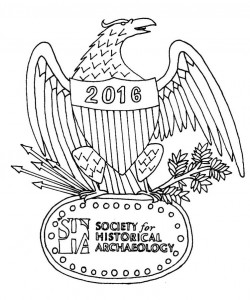
Last week, we started posting about Things to Do in Washington, D.C., so that you may begin planning for your #SHA2016 trip! This week’s blog post provides another list of various, exhibits and research centers. Whether you wish to play tourist or conduct research, we suggest you check out our list, below!
The Historical Society of Washington, D.C.
If you are interested in learning more about the urban development of Washington D.C., a visit to the Historical Society of Washington, D.C. is a must. The Carnegie Library, located in Mt. Vernon Square, offers a variety of exhibits exploring the history of the city and the history of the city’s inhabitants. The “Window to Washington” exhibit depicts the city’s transformation from rural landscape into a modern metropolis. Additionally, the library and collections offer ample resources for researchers to study the “city’s physical landscape as well as the families, organizations, businesses, neighborhoods, religious institutions and other communities that comprise Washington, D.C.”
Free of Charge
Check it out: http://www.dchistory.org/
Sewall-Belmont House
Just a block northeast of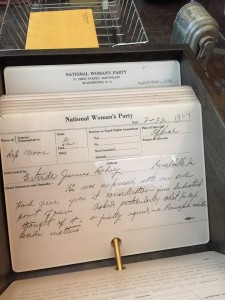 the U.S. Capitol is a museum dedicated to history of the fight for women’s rights. The Sewall-Belmont House museum is owned by the National Woman’s Party, and displays their extensive collection of objects that document the story of the women’s suffrage movement. The collection features thousands of books, scrapbooks, political cartoons, textiles, photographs, organizational records and other artifacts “produced by women, about women.” This offers another wonderful resource for historical archaeologists.
the U.S. Capitol is a museum dedicated to history of the fight for women’s rights. The Sewall-Belmont House museum is owned by the National Woman’s Party, and displays their extensive collection of objects that document the story of the women’s suffrage movement. The collection features thousands of books, scrapbooks, political cartoons, textiles, photographs, organizational records and other artifacts “produced by women, about women.” This offers another wonderful resource for historical archaeologists.
$8 for a Guided Tour
Check it out: http://www.sewallbelmont.org/
The Smithsonian Institution Building (The Castle) Located on the National Mall, the beautiful mid-nineteenth century Gothic-Revival Smithsonian Institution Building now houses the Smithsonian’s administrative headquarters, but the ‘Castle’ also contains several exhibits celebrating the institution itself, funded by James Smithson. These exhibits look at the history of the Institution, and visitors can see selected objects from all of the Institution’s museums.
Free of Charge
Check it out: http://www.si.edu/Museums/smithsonian-institution-building
Fords Theater
The fateful night of April 14th, 1865 when President Abraham Lincoln was shot at Fords Theatre, is commemorated at Ford’s Theatre Museum. Visitors may take a self-guided tour around exhibits that explore Lincoln’s presidency, up until the night of his death. The collection features textiles, documents, and artifacts of Lincoln’s, and, at the Center for Education and Leadership, an exhibit examines the aftermath and impact of Lincoln’s assassination, on the United States.
$2.50 for a self-guided tour
Check it out: http://m.fords.org/planning-to-visit
Clara Barton Missing Soldier’s Office Museum
Only recently rediscovered, the Clara Barton Missing Soldier’s Office Museum is the former residence and office of Clara Barton during and following the Civil War. Located on 7th Street in NW, the CBMSOM offers a stark and realistic history of the aftermath of the Civil War, through the efforts of Barton to find and identify missing soldiers.
Check it out: http://www.civilwarmed.org/clara-barton-museum/
Frederick Douglass National Historic Site
Owned and operated by the National Park Service, the Frederick Douglass National Historic Site is the last home of Frederick Douglass. Douglass lived in Cedar Hill, SE from 1878 to 1895, when he passed away. The house museum does well to present and interpret Douglass’ impressive and impassioned political career, in our nation’s capital. The house museum offers an extensive and intriguing collection detailing Douglass’ vision, mission, and lifestyle during the latter 19th century.
Check it out: http://www.nps.gov/frdo/index.htm
Last but most certainly not least!
Before coming to #SHA2016, be sure to take the virtual archaeology tour of Washington, D.C.!
Check it out: http://www.heritage.umd.edu/CHRSWeb/DC%20Archaeology/DC%20Archaeology%20Tour/Archaeology%20Tour.htm.
5 Archaeological Things to See and Do in Washington D.C.
Remember, the last day to submit your #SHA2016 conference abstract is June 30th, 2015. See our previous blog post with the Call for Papers: https://sha.org/blog/2015/05/sha2016-call-for-papers/
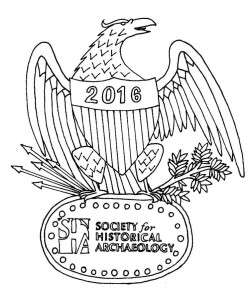 As we have seen in the last several posts, Washington D.C. and it’s surrounding area is a thriving place for history and archaeology. Archaeologists are doing important work engaging the public and interpreting the past of the nation’s capital. When we all travel to D.C. for #SHA2016 there are plenty of places to explore that capture the essence of this area’s heritage. Below, are five places to visit:
As we have seen in the last several posts, Washington D.C. and it’s surrounding area is a thriving place for history and archaeology. Archaeologists are doing important work engaging the public and interpreting the past of the nation’s capital. When we all travel to D.C. for #SHA2016 there are plenty of places to explore that capture the essence of this area’s heritage. Below, are five places to visit:
The National Museum of the American Indian
A new exhibit entitled “Our Universes: Traditional Knowledge Shapes Our World” opens at the Museum of the American Indian this September. What looks to be an incredible exhibit focuses on indigenous cosmologies, introducing the worldviews and cultural philosophies of eight communities all over the western hemisphere. This exhibit will run until October 2017 and along with the many other feature collections at the Museum, is a must see during our stay in Washington D.C.
Check it out: http://americanindian.si.edu/ Free of Charge
Alexandria Archaeology Museum
Located just a metro ride away, the Alexandria Archaeology Museum features exhibits highlighting their excavations of The Lee Street Site, the Green Furniture Factory, and the Ashby household. The museum also features hands-on-activities for adults and children alike, and the space also doubles as a public laboratory. You can also get information to walk the Alexandria Heritage Trail, which is a 23-mile walking and bike tour that takes you through 110 historical and archaeological sites representing the history of Alexandria.
Check it out: http://alexandriava.gov/Archaeology Free of Charge
The Library of Congress
The Library of Congress houses millions of artifacts and archives that, as archaeologists, we know are important resources. The Museum features exhibits commemorating the history of the Library, the architecture of the Thomas Jefferson building, and its celebrated holdings, including the Gutenberg Bible. You can join a one-hour walking tour of the historic building or enjoy a self-guided tour. Definitely take time to explore the reading rooms, and even take an extra day to use the research centers to examine the Library’s archival materials for your own research.
Check it out: https://www.loc.gov/ Free of Charge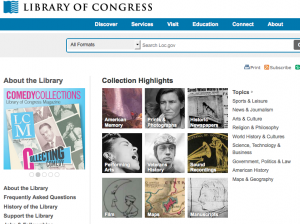
The National Geographic Museum
If you decide to make a longer trip to Washington D.C., make sure to stop by the National Geographic Museum. Ending January 3rd, the “Indiana Jones and the Adventure of Archaeology” exhibit juxtaposes real archaeological artifacts with a collection of film materials from the movie. How many of us get asked if archaeologists are like Indiana Jones, well this seems like an exhibit that explores the difference! If you can’t make this exhibit, the National Geographic Museum showcases their stunning photography from all over the world.
Check it out: http://events.nationalgeographic.com/national-geographic-museum/Ticketed
Dumbarton Oaks
Located in Georgetown, Dumbarton Oaks is a research institution with collections of Byzantine and Pre-Columbian art. The House collection showcases the historic interiors with Asian, European, and American artworks and interior furnishings donated by Mildred and Robert Woods Bliss between 1940 and 1969. Docent-led tours take place every Tuesday, Wednesday, and Thursday at 3:00 pm, but the Museum is open from 11:30 to 5:30 for self-guided tours.
Check it out: http://www.doaks.org/ Free of Charge
Throughout the summer we will be linking to more “archaeological” sightseeing opportunities in Washington D.C.
Publication in just…. How many easy steps?
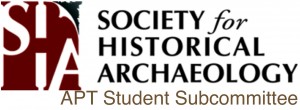 This past January I had the pleasure of attending the annual society conference in Seattle, Washington. As usual, the conference was an amazing opportunity to learn about current research taking place in the field, network with colleagues and potential employers, as well as let loose and have a little fun at the annual dance on Friday night. In addition to this business as usual, I had the amazing opportunity to chair a panel discussion focused on publishing that was geared specifically towards students and recent graduates. With the help of Jennifer Jones, Nicole Bucchino and Mary Petrich-Guy, we were able to assemble an all-star panel of people from various universities, publishing companies and research institutions, who were able to answer all of our burning questions on the art of publishing.
This past January I had the pleasure of attending the annual society conference in Seattle, Washington. As usual, the conference was an amazing opportunity to learn about current research taking place in the field, network with colleagues and potential employers, as well as let loose and have a little fun at the annual dance on Friday night. In addition to this business as usual, I had the amazing opportunity to chair a panel discussion focused on publishing that was geared specifically towards students and recent graduates. With the help of Jennifer Jones, Nicole Bucchino and Mary Petrich-Guy, we were able to assemble an all-star panel of people from various universities, publishing companies and research institutions, who were able to answer all of our burning questions on the art of publishing.
Despite taking place at 8:30am on Saturday morning, the panel discussion had an excellent turnout and the panelist were lively and eager to answer our questions. Due to our focus audience, many of our questions focused on some of the basic ins and outs of publishing. How do I get my work out there for publication? What medium of publication (journal article, edited volume, blog, etc.) is best for me? How do I cope with rejection? Fortunately in this panel discussion I was the one asking the questions and our panelists came prepared with excellent answers. While I don’t have space to recap the entire panel here, I would like to share some of the major points I took home points from panel.
First off, all panelists unanimously agreed that the act of simply writing was important. Such an elementary step may seem obvious to some, because you can’t publish something that you haven’t written. However this all-important step is one of the most difficult steps to accomplish. One panelist suggested that devoting one hour to writing every day was a good start, while another advised that writing 1,000 words a day was an admirable goal. So step #1 to publication? Write. Simple, right? Well sure, but write what exactly? Again, panelists were in agreement on this one too; their suggestion was to write about what you know and to tailor your publication for a medium that is appropriate for your target audience. Because of this, the form a publication will take depends on the program of study, degree, career path and the goal of the publication. So, how to choose? Journal article? Single author or co-author? Chapter in an edited volume? Article in a newsletter? Blog? Fortunately, I have some very good news for you here. Our panelists were all in agreement that there is no such thing as a bad publication. I thought this was particularly interesting given that some of the newly emerging electronic and open access publication mediums (like Academia, for example) make publication a little easier perhaps, or at least more accessible to students than some of the more traditional publication mediums. However, after a lengthy discussion of the issue the panelists were still in agreement and all of the aforementioned mediums were given the thumbs-up for pursuit.
Moderating this panel discussion was a truly enjoyable experience and would like to thank Charles Ewen, Annalies Corbin, Teresa Krauss, Carol McDavid and Doug Rocks-Macqueen for graciously participating in our panel. We are currently putting together our topic for next year’s panel, so please stay tuned!




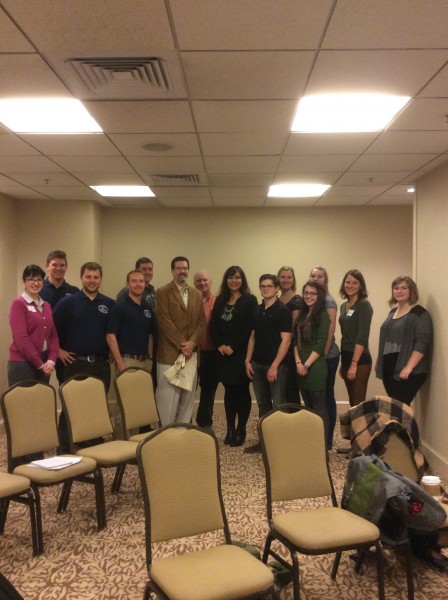


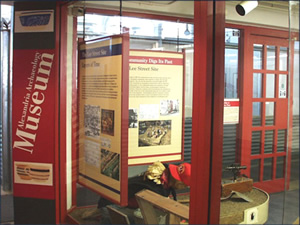
Pingback: WAC May 2012 eNewsletter – Volume 40 – World Archaeology Congress